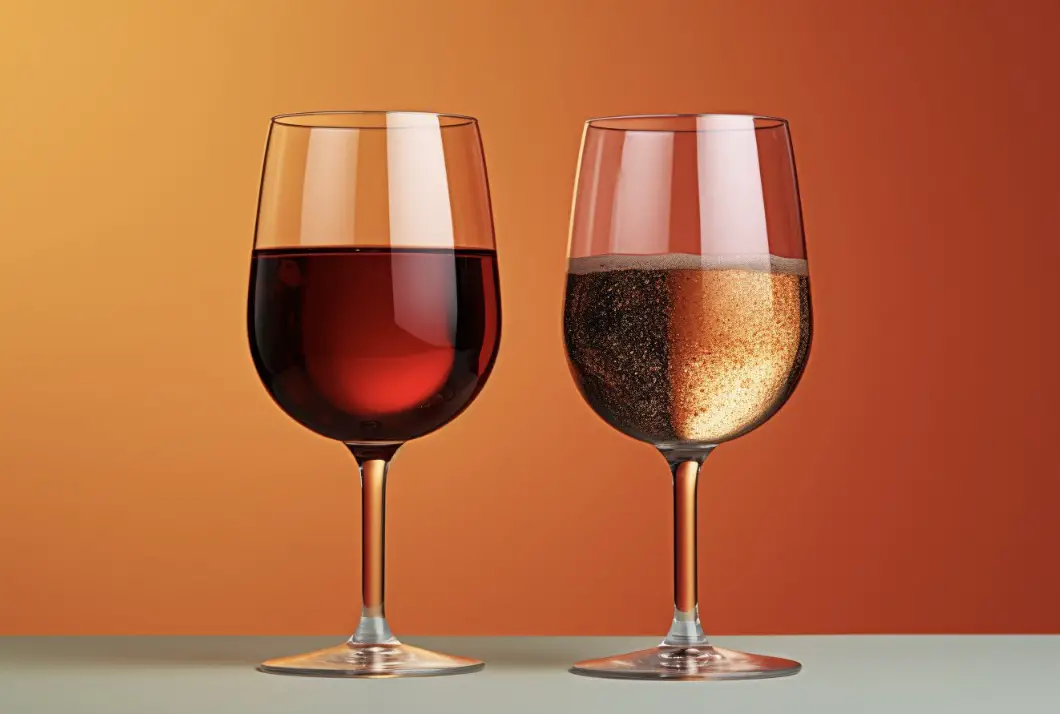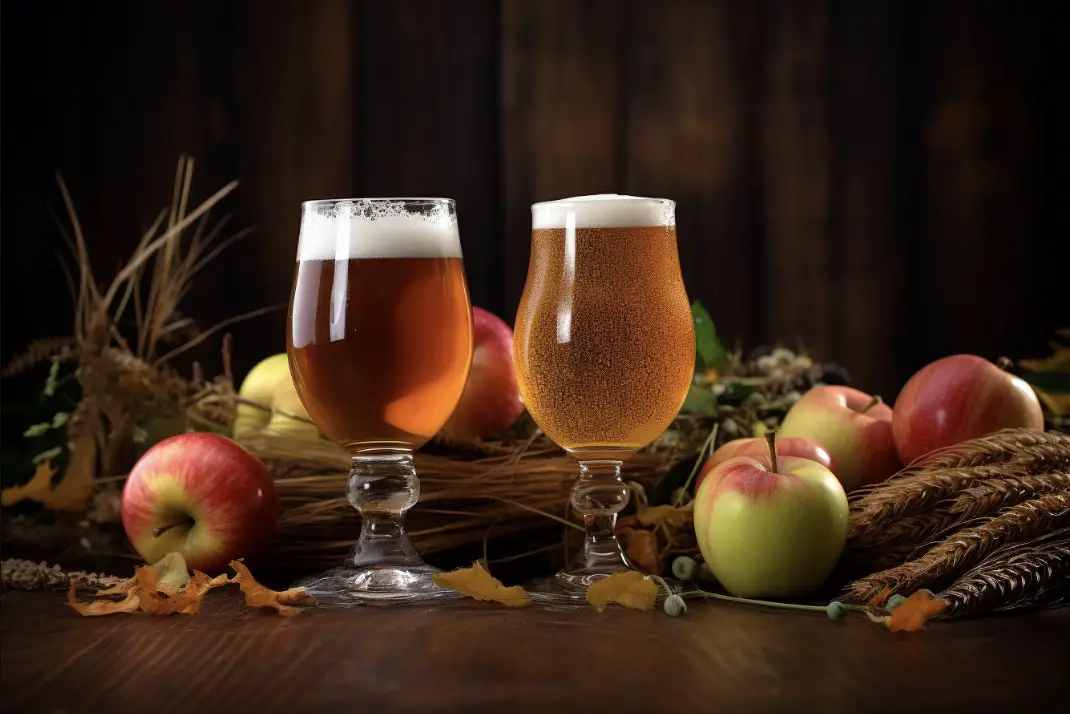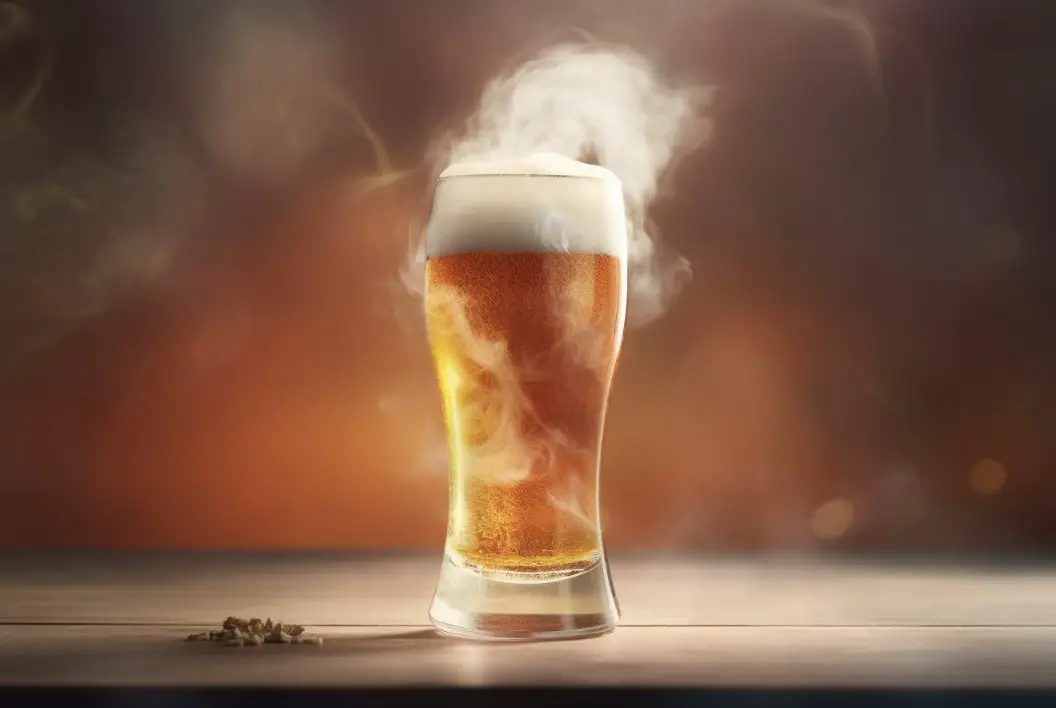Which wines are non-carbonated? In short, most wines are non-carbonated, as they are produced through traditional fermentation processes that do not create carbonation.
However, there are some exceptions to this rule, such as sparkling wines like Champagne or Prosecco, which undergo a secondary fermentation that results in their signature effervescence.
In this blog post, we will explore the world of non-carbonated wines, discussing various styles, production methods, and the unique characteristics of each.
Still Wine: The Most Common Non-Carbonated Wine
Still wine is the most common type of wine that is non-carbonated. These wines are produced by fermenting grape juice, which converts the natural sugars in the grapes into alcohol. The fermentation process does produce some carbon dioxide, but this is allowed to escape during fermentation, resulting in a wine that is still and non-carbonated.
Red Wine
Red wine is made from dark-colored grape varieties, which give the wine its deep red color. The production process involves crushing the grapes and allowing the juice to ferment with the grape skins. This contact with the grape skins imparts the wine’s rich color, as well as tannins and other complex flavors. Some popular red wines include Cabernet Sauvignon, Merlot, Pinot Noir, and Syrah.

White Wine
White wine is made from either white or red grapes, but the grape skins are removed after crushing, which results in a lighter-colored wine. White wines tend to be more delicate and less tannic than red wines, with flavors often including citrus, green apple, and tropical fruits. Some popular white wines include Chardonnay, Sauvignon Blanc, Riesling, and Pinot Grigio.
Rosé Wine
Rosé wine is a category of wine that falls between red and white in terms of color, ranging from pale pink to deep salmon. Rosé wines are made from red grapes, but with minimal skin contact during fermentation. This brief contact with the grape skins imparts a hint of color and a delicate balance of flavors. Some popular styles of rosé include Provencal rosé, White Zinfandel, and Pinot Noir rosé.
Fortified Wine: A Unique Non-Carbonated Category
Fortified wine is a type of non-carbonated wine that has been enhanced with the addition of a distilled spirit, usually brandy. This addition not only increases the wine’s alcohol content but also adds complexity and richness to its flavor profile. Some popular fortified wines include Port, Sherry, Madeira, and Marsala.
Port
Port is a fortified wine that originates from Portugal. It is typically made from a blend of red grape varieties and is known for its sweet, rich flavors and high alcohol content. Port is often enjoyed as a dessert wine or as an accompaniment to cheese and chocolate.

Sherry
Sherry is a fortified wine that originates from Spain. It is made primarily from the Palomino grape and can range in style from dry to sweet. Sherry is unique in that it undergoes a special aging process called the “Solera system,” which involves blending wines from multiple vintages to create a complex final product.
Dessert Wine: Sweet and Non-Carbonated
Dessert wine is a category of non-carbonated wine that is typically sweet and enjoyed after a meal. These wines can be made from a variety of grapes and production methods, resulting in a wide range of flavors and styles. Some popular dessert wines include Ice Wine, Sauternes, and Moscato.
Ice Wine
Ice wine is a type of dessert wine that is made from grapes that have been left on the vine to freeze. This process concentrates the sugars in the grapes, resulting in a very sweet and flavorful wine with a high acidity that balances the sweetness.
Sauternes
Sauternes is a dessert wine that originates from the Bordeaux region of France. It is made from Semillon, Sauvignon Blanc, and Muscadelle grapes that have been affected by a fungus called Botrytis cinerea, which causes the grapes to shrivel and concentrate their sugars. This results in a sweet, golden wine with flavors of honey, apricot, and tropical fruit.
Conclusion
To summarize, most wines are non-carbonated, with the exception of sparkling wines like Champagne and Prosecco. Non-carbonated wines can be categorized into still wines, fortified wines, and dessert wines, each with their unique characteristics and production methods. Some key facts about non-carbonated wines include:
1. Still wines are the most common type of non-carbonated wine
2. Red wines are made from dark-colored grape varieties and have a deep color and rich flavor profile
3. White wines are made from either white or red grapes and have a lighter color and more delicate flavor profile
4. Rosé wines are made from red grapes with minimal skin contact, resulting in a pale pink color and a delicate balance of flavors
5. Fortified wines are non-carbonated wines that have been enhanced with the addition of a distilled spirit, such as brandy
6. Port and Sherry are popular examples of fortified wines
7. Dessert wines are sweet, non-carbonated wines that are typically enjoyed after a meal
8. Ice wine and Sauternes are examples of dessert wines made from grapes with concentrated sugars
9. Most non-carbonated wines are produced through a fermentation process that allows carbon dioxide to escape
10. Non-carbonated wines can be enjoyed in a variety of settings and are suitable for a wide range of palates and preferences.
FAQs
Are red wines carbonated?
No, red wines are typically not carbonated. Carbonation refers to the presence of carbon dioxide gas dissolved in a liquid, which creates bubbles and a fizzy sensation. While there are some exceptions, such as certain sparkling red wines or red wine-based cocktails, the majority of red wines are still (non-carbonated) in nature. These wines undergo a fermentation process where yeast converts grape sugars into alcohol, but the carbon dioxide produced during this process is usually allowed to escape, resulting in still wines.
What white wine is carbonated?
One white wine that is commonly carbonated is Vinho Verde. Vinho Verde is a Portuguese wine that is known for its light, crisp, and slightly effervescent nature. It is traditionally made using indigenous grape varieties such as Alvarinho, Loureiro, and Trajadura. The carbonation in Vinho Verde can be a natural byproduct of the winemaking process, where residual carbon dioxide is retained in the bottle during fermentation. In some cases, winemakers may also add carbonation artificially to enhance the wine’s effervescence.
Why is my Pinot Noir fizzy?
If your Pinot Noir wine is fizzy, it is likely due to a process called secondary fermentation. Pinot Noir, like many other wines, undergoes primary fermentation where yeast consumes the sugars in the grape juice and converts them into alcohol. However, sometimes a small amount of residual sugar remains after primary fermentation.
If the winemaker bottles the wine before all the residual sugar is fermented, some yeast and sugar can still be present in the bottle. The yeast continues to consume the remaining sugar, producing carbon dioxide as a byproduct. Since the carbon dioxide has nowhere to escape in a sealed bottle, it dissolves into the wine, creating the fizzy or effervescent sensation.
This secondary fermentation can occur if the winemaker intentionally leaves some residual sugar to create a slightly sweet wine, or if the fermentation process is not properly controlled. It can also happen if the wine is exposed to warm temperatures, which can reactivate the yeast and restart fermentation in the bottle.
To prevent this fizzy issue, winemakers usually ensure that all the sugar is fermented before bottling by carefully monitoring the fermentation process and using techniques such as cold stabilization or sterile filtration to remove any remaining yeast. However, if your Pinot Noir is already fizzy, it is likely a result of secondary fermentation and can be considered either a flaw or a deliberate style choice by the winemaker.
What is carbonated red wine called?
Carbonated red wine is commonly known as “sparkling red wine.”
Is Chardonnay wine carbonated?
No, Chardonnay wine is typically not carbonated. Chardonnay is a type of white wine made from the Chardonnay grape variety. It is typically produced in a still (non-sparkling) style, meaning it does not contain carbon dioxide (CO2) bubbles. However, it’s important to note that there are exceptions to this general rule. Some winemakers may produce Chardonnay in a sparkling or semi-sparkling style, but these are less common and typically labeled as such.
Is Pinot Noir carbonated?
No, Pinot Noir is not typically carbonated. Pinot Noir is a red wine grape variety known for producing still, or non-sparkling, wines. It is grown in various wine regions around the world, including Burgundy in France, Oregon and California in the United States, and Central Otago in New Zealand. While there are sparkling wines made from other grape varieties, such as Champagne made from Chardonnay and Pinot Noir grapes, Pinot Noir itself is not carbonated by nature.




